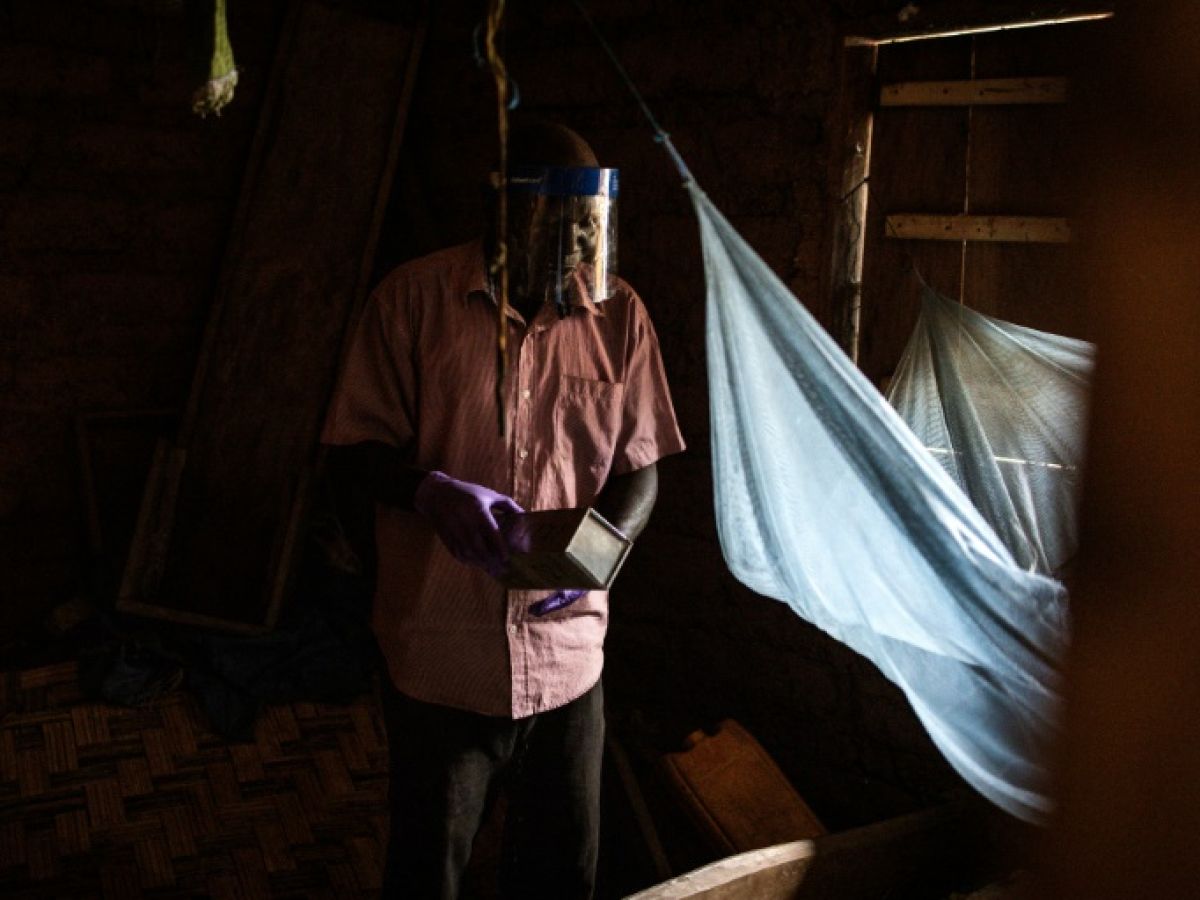Foraging in the darkness of a small mud house in eastern Sierra Leone, ecologist James Koninga digs out from under a bed a rat trap, a rudimentary but essential device against a deadly illness, Lassa fever.
James Koninga, 62, is part of a group of researchers studying Lassa fever, a viral hemorrhagic disease endemic to several West African countries and transmitted by rodents. He knows the effects: 30 years ago, the virus sent him, then a young scientist, to the hospital with fever, diarrhea and headaches. Twenty days of ordeal.
“I saw myself leaving, I saw myself dying,” he said.
Ten years ago, another viral and hemorrhagic disease, Ebola, sowed death and fear in West Africa. Starting from Guinea, reaching Sierra Leone and Liberia, the epidemic, the most serious since the discovery of the virus in 1976, caused more than 11,000 deaths in two years.
Sierra Leone has not had a case of Ebola since 2016, partly thanks to vaccination.
The lessons of Ebola are now being used by scientists in their other fight against Lassa fever, starting with the Kenema region, the first in Sierra Leone where Ebola was reported a decade ago.
At 1%, the fatality rate of Lassa fever is very far from Ebola (around 50% on average according to the World Health Organization). But it can reach 15% in patients with severe forms.
Researchers are on the lookout for the slightest sign of progression of the disease. The number of cases is stagnating, but they are more widely spread across the territory. There is no recognized vaccine, treatments are limited and doctors are faced, as with Ebola, with obstacles that obstruct early treatment, the best guarantee of cure.
Monitoring rodents is crucial in the Kenema region and remote villages like Mapuma, where James Koninga today operates among homes under the cover of dense forest.
The virus is transmitted to humans mainly through contact with food or household items contaminated by rodent urine or droppings.
– Life with rats –
“Rats dig their burrows inside houses” and leave their droppings there, says James Koninga, wearing a mask and protective gloves.
“If people come back from the bush with sores and lie on the bed, they risk being infected.”
Proximity to the bush, earthen buildings, open storage of grain and water… Dwellings like those in Mapuma are “five-star hotels” for rats, says Lansana Kanneh, 58, field supervisor at the hospital. Kenema Government Office (KGH).
“Food is so scarce for people that they sometimes eat food partially eaten by rodents,” he says.
Trappers can capture 20 rats per day.
They first ensure that the rodents are of the Mastomys genus, the reservoir of the virus. They take samples which will be analyzed. The rats are released after an injection which blocks the transmission of the virus.
The fever affects between 100,000 and 300,000 people a year in West Africa and kills around 5,000, according to the Africa Centers for Disease Control and Prevention. Figures probably lower than reality.
Admissions to the specialized ward of Kenema Hospital, the only dedicated treatment center in Sierra Leone, have declined over the past 10 years. But the image is misleading.
Patients used to arrive in the dry season, between November and May, but now "we see cases all year round," says Dr. Donald Grant, head of KGH's Lassa fever program.
– “Act now” –
And mortality among those hospitalized has increased alarmingly to exceed 50%.
“They sometimes spend 24 or 48 hours in the hospital, and then they die,” reports Lansana Kanneh.
The team is observing an increase in cases outside formerly endemic districts. Dr. Grant cites the expansion of human activities in the forest, which brings them closer to rats.
Detecting the problem as early as possible is vital. However, the first symptoms such as bouts of fever can be confused with those of malaria, cholera or typhoid. The distance from doctors and several hours of bumpy roads discourage people from seeking care.
The memory of Ebola, which claimed the lives of around 4,000 Sierra Leoneans, remains vivid.
“People believed that it was health workers who transmitted Ebola,” recalls Lansana Kanneh.
Dr. Grant hopes for a licensed vaccine in the coming years. A vaccine is currently in an intermediate phase of clinical testing on several hundred people in Nigeria and Liberia.
In the meantime, the doctor calls for remaining vigilant. Ebola “taught us that we must not wait for the critical point or (the epidemic) will overwhelm us all,” he said. " Now is the time to act ".

